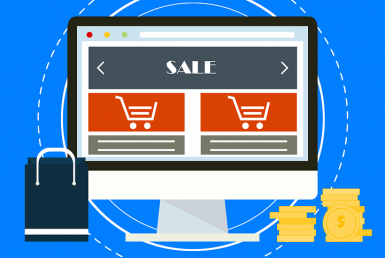First Party Risks? – (The Ecommerce Effect)

Ecommerce Effect – First Party Risks
Understanding commercial lines property and casualty coverages
are needed to respond to liability risks. These liability risk would be associated
with activities associated with commerce activities.
This is marked differently than with insurance coverage for a 1st party risk, as an example.
This is because most corporate insureds already have the basic coverage option plans in place.
(E-commerce Effect) – Insurance Minimum?
At the bare minimum, an insured of an e-commerce policy will need the
following coverages or at least have an equivalent. Why do you ask?
This is to have in place to make sure a liability insurance program is ready to respond to e-commerce liability risks.
Below are some of the insurance programs, available and can be found by asking an insurance professional:
• Umbrella liability
• Liability risks associated with e-commerce
• Commercial general liability
• Professional liability
• Multimedia errors and omissions

Standard Commercial General Insurance?
Many corporate insureds, however, only have the standard commercial general liability policy.
These policies include the basic coverage limitations for umbrella and excess liability coverages in the program.
These corporate insureds have the most issues to address if they
are looking for better coverage for e-commerce activities.
These liability risks would have comprehensive policy coverage and policy structure.
Standalone Commercial Insurance
There exists, in contrast, other coverage options for corporate insureds, that can be as a standalone insurance policy.
Or, a rolled into one policy, with manuscript liability policy as the primary layer of coverage.
This is where risk managers of these organization, find vociferous in their opinion and judgment call.
This is because they have no need for any new standalone e-commerce insurance policy.
Total Policy Completion?
These policyholders may be correct in their point to recognize that this may not be a viable option.
This is because, many U.S. Fortunate 1000 companies, only maintain a standalone:
• standard CGL,
• umbrella and
• excess liability coverage.
Risk Infringement?
Risk of infringement can exist with the use of intellectual property rights.
These e-commerce activities can pose a risk for the exposure of liability for intellectual property rights.
Some of these risk indicators include the following:
• Trademark
• Infringement of patent
• Copyright
• Right of publicity
• And the like
Risk Exclusion
As with anything in relation to insurance and coverage, make sure to see what exclusions exist on policy.
This is because some of the risks are just not covered. Some of the policy risks for exclusion are as followed:
- Casual connection – injury claimed due to having a connection to the insureds advertising activities.
- This should be easily proven for coverage to kick in.

Advertising Injury
Another form of coverage may need to be addressed for such a risk.
This type of risk, or advertising injury coverage, can be found in your commercial general liability policy or umbrella policy.
You can begin your research in this area to see what problems are associated with the e-commerce activities.
One problem that needs to be addressed regarding e-commerce activities is the liability.
This is because, liability is the protection against a 3 party in the event of an advertisement on a website, for example, infringes on the material of another source or contact.
Claim Coverage
For claims that fall under this type of coverage, the commercial general liability and umbrella insurance carriers would deny coverage.
This would be since; such a claim is not coming from an insured advertising activity.
Even if the claimed injury did have an injury, that came out of the advertising, the injury still must fall within 1 of the specified offenses.
Claim Offenses
As an example, even if a claimed injury did not result for the insured’s advertising, the injury still must fall within one of these specified offenses, set forth.
They would be in standard definition and uphold the policy formation of the Commercial general liability policy, or an umbrella policy.
Claim Conditions
There are other intellectual property risks that are associated with the business activities of online marketing and doing business.
Usually, these risks are to likely fall outside the true definition of the policy language.
As an example, the risk of infringement of the right of publicity, will not fall under this definition scope.
There are many courts in the legal system that do not recognize such an insurance coverage.
This includes patent infringement under the newer standard CGL wording.
Commercial Insurance Provisions
Many commercial general liability insurance companies, issue their policies with restricted or narrowed advertising injury coverage.
This narrow provision of policy limits and coverage is to avoid infringement on the trademark or copyright of advertising literature.
It also, specifies that infringement must be caused by the insureds paid advertisement in the following media forms:
Newspaper
Magazine
Television Ad
Online or Internet Marketing
Commercial Insurance Policy Language
This type of policy language severely restricts the extent of policy coverage under the intellectual property risk.
These property risk involved the activities of e-commerce.
Looking for potential coverage gaps for this type of risk, are not uncommon or new to many business owners.
The solution of Insurance Coverage
These risk solutions can come in the form of purchasing a specific type of insurance coverage.
This type of insurance coverage comes in the form of media errors and omission insurance.
This type of insurance will typically be labeled in the insurance vocabulary as multimedia or liability insurance.
However, these forms cover the risk types that were mentioned above, for coverages such as internet activities.
Policy Endorsements of Coverage
Policy endorsements for this type of insurance coverage are always changing and in transition.
This is because of the many changes of technology, throughout the course of a business life cycle.
These new forms of media, have transitioned over the last decade or so, which would examine the late 90s and early 2000s.
Media Forms of Development
Some of these forms of media include the following:
• CD
• CD-ROMs
• video game and engineering
• customer management database and system
• record keeping
• employee tracking
• business operation and software
Older Technology
Some of the above media forms, as you can see, are outdated and older forms. In some cases, they are still currently used.
However, we wanted to display the history and transition of technology in the business environment and workplace.
These older multimedia forms serve as part of the platform for many other new ecommerce liability insurance products.
So, these older pieces of technology, have created a strong foundation to build extra new layers of innovation and advancement.
Ecommerce Effect & Activities
These ecommerce activities that originate from the building blocks of older technology, also pose a risk of liability.
This liability is for damage caused to another individuals property, such as the below:
• Computer data
• Software data
• Insurance programs
• Computer networks
• Computer servers
• Telephone networks
• Internet connections and capability
Risk Factors?
There are many risk factors when it comes to the ecommerce marketplace of protection and insurance.
For example, if a client’s computer becomes invested with a virus, and malfunctions, coverage would kick in.
The claim against the insured for that damage and any consequential loss suffered as a result of the damage would also be factored into this coverage reimbursement.
In addition to just the computer system malfunctioning, this type of insurance coverage would also consider the application of any network malfunction or contamination.
As an example, it the server or network of computers were to be infected or break down, this would also be considered into the insurance equation of protection for ecommerce.
This type of ecommerce coverage would extend to any of the media forms mentioned earlier.
The pure financial loss that is sustained by a client, can be considered a real risk, as defined in the insurance handbook.
Privacy Risk of Invasion
Another area to delve into is the risk of privacy and invasion for e-commerce activities.
These types of activities pose a serious threat to the risk of liability for the following acts:
• Invasion
• Infringement
• Interference
Traditional CGL – Problematic?
The reason for any misunderstandings of potential problems would come from the actual insurance wording and interpretation.
This is because, the traditional policy definition of the words, may have another implication.
The relationship of the definition to the actual outcome, may not run parallel, creating a policy revision.
What this means is, the language is triggered by the words in the policy information packet.
They must be disseminated in order to find its true purpose, function, and meaning.
Big Industry Risk
The risk posed by the ecommerce market and its activities is, not so limited as the big privacy risk.
This risk of liability is, for gathering information regarding an online user who visits a website.
This online user has no knowledge that information is being collected as they surf throughout the website.
This type of user activity risk would be classified as a first party risk in the langue of insurance.
First Party Risk
There are many types of risk coverages.
Some are classified into their direct impact on an insurable item.
These types of risk coverage policies are normally covered under the following insurance programs:
• a commercial property policy
• commercial crime policies
• fidelity bonds
• kidnap
• ransom
These type of insurance policies provide the insured with liability coverage in the context of such first-party losses.
What do First Party Policies Cover?
• Lost income
• Extra expenses
• Computer crash
• Computer network crash
• Website crash
• Denial of access to the computer system
• Denial of access to website and network
Policyholder Community
This community of policyholders has responded to the insurance industry changes to these new issues.
As an example, Fortune 1000 companies have taken the position that they do want more standalone insurance policies.

Steps of Insurance Buying
This is because they are tired of going through the required steps to have its coverage:
• Negotiate
• Buy
• Administer
• Maintain
The policyholder community has responded to the insurance industry response to these issues in different ways as we have discussed, however, an important note is the solution orientation of this discussion.
The insurance solution in times has been the gap filler, reducing any coverage gaps in protection.
This solution type mindset and the program can only strengthen the continual operation of online businesses, rather they by independent insurance agencies, branching into the franchise world of insurance.
Or a large insurance carrier in the property and casualty field, looking to market and sell product outside their reach.
Either the case, the result is to reduce exposure and risk, while maintaining a level of pure finances.
This is to maintain the natural order of the financial structure of the business, without any adjustments unless needed.




